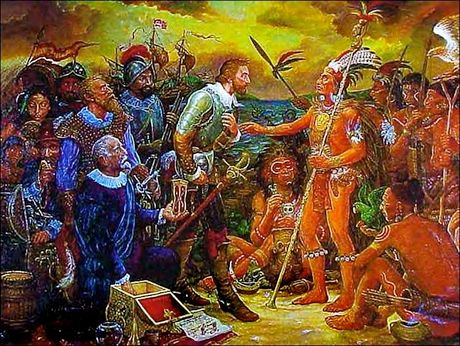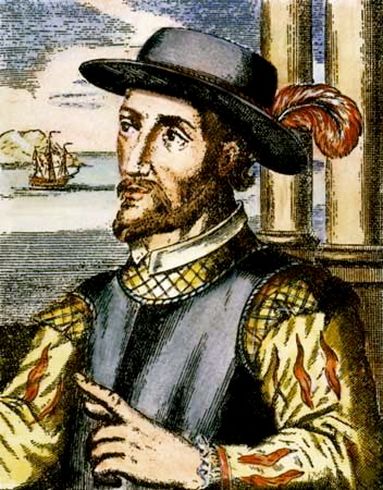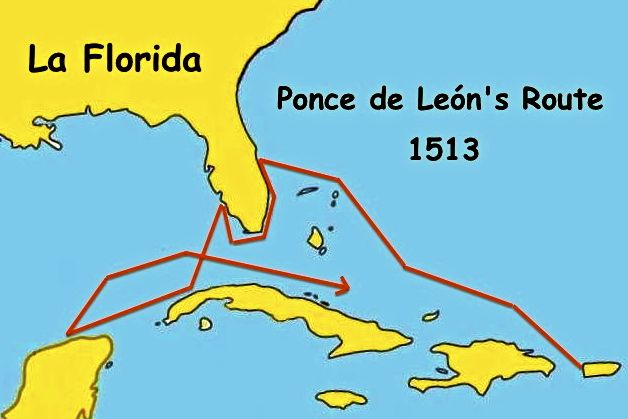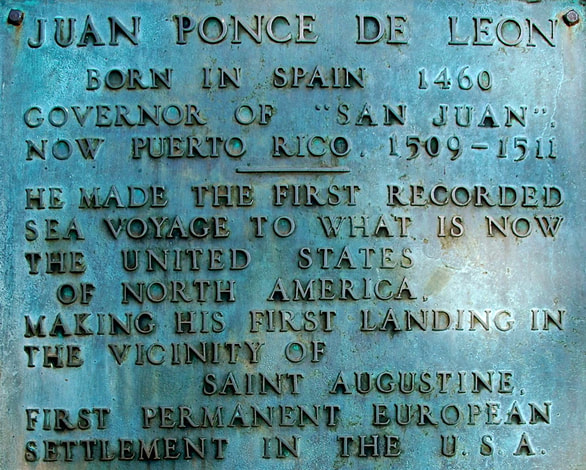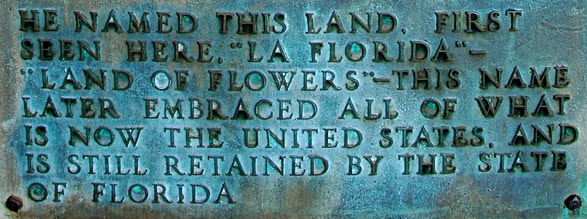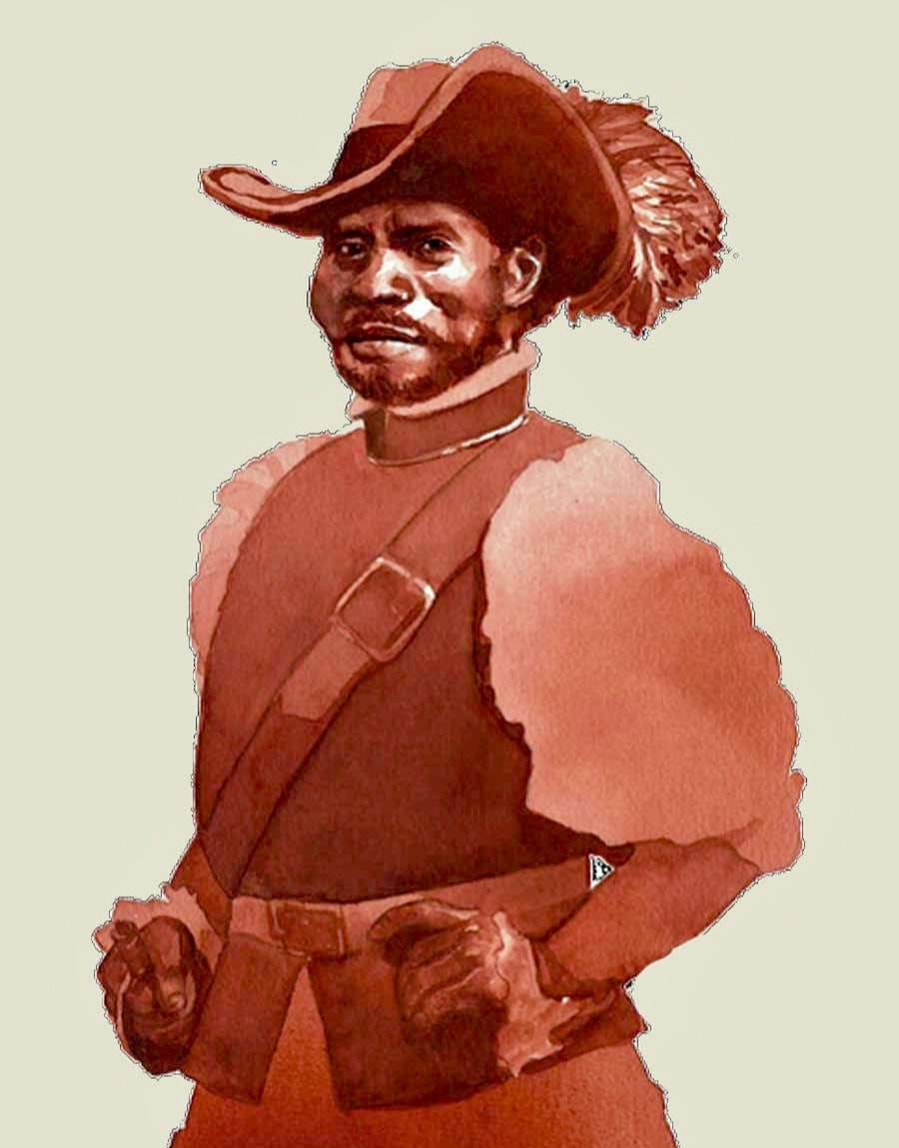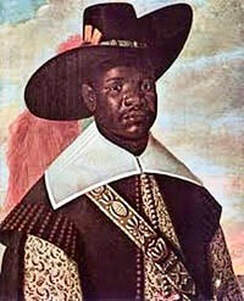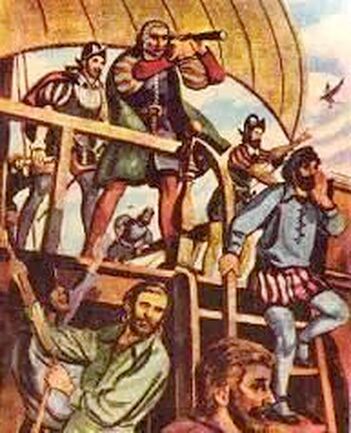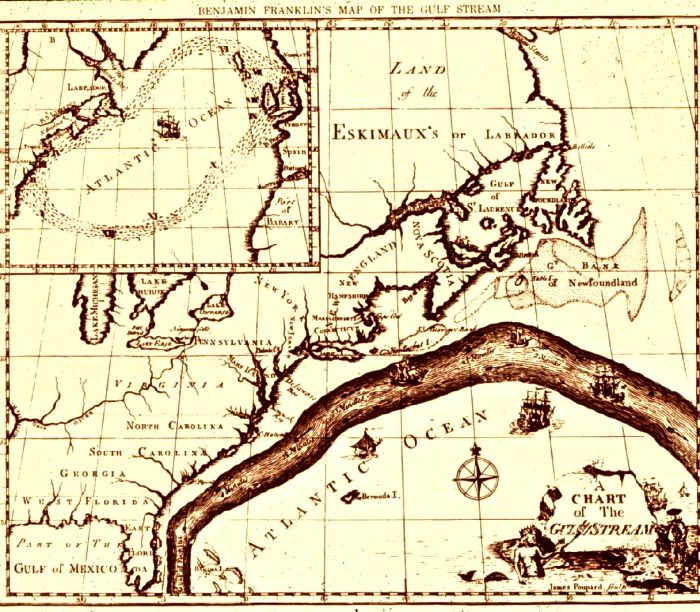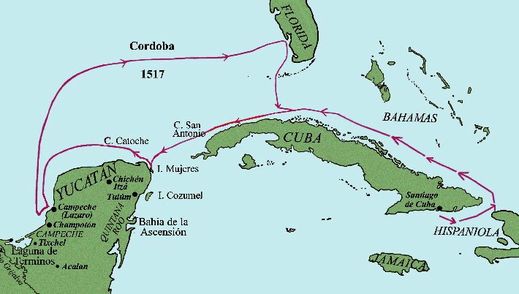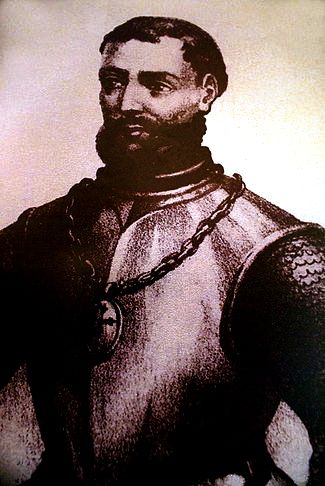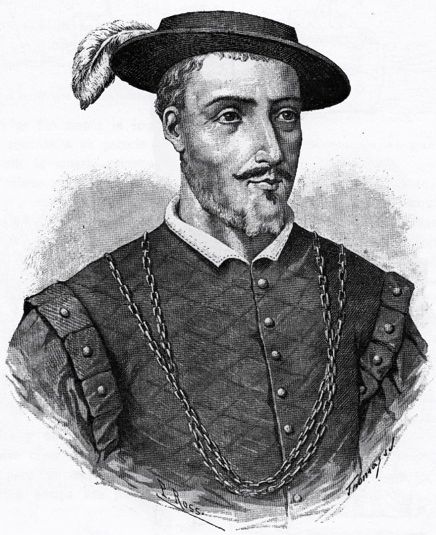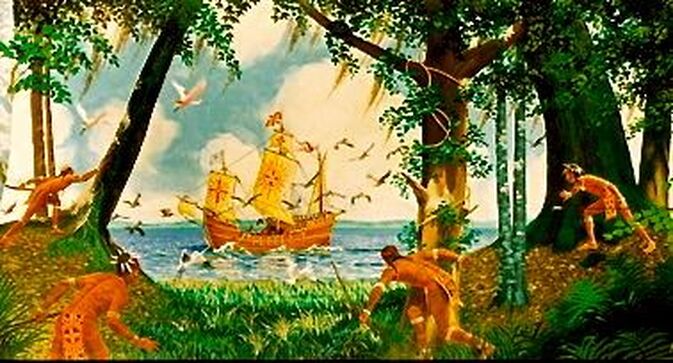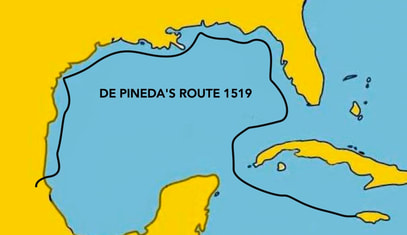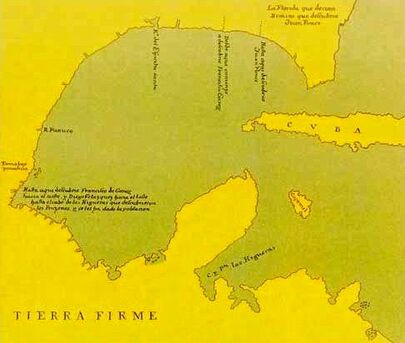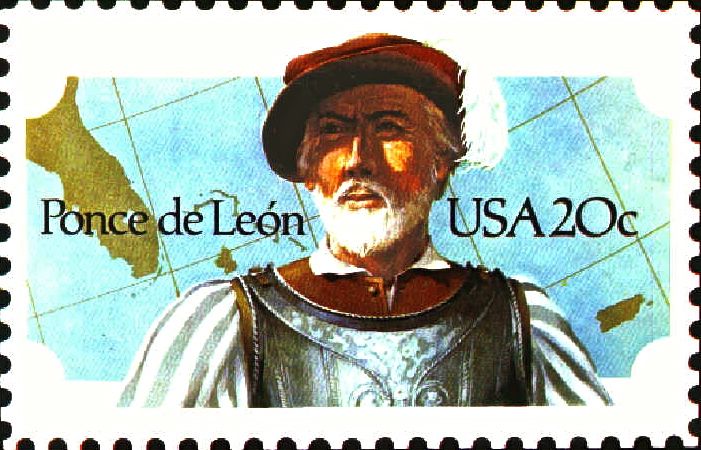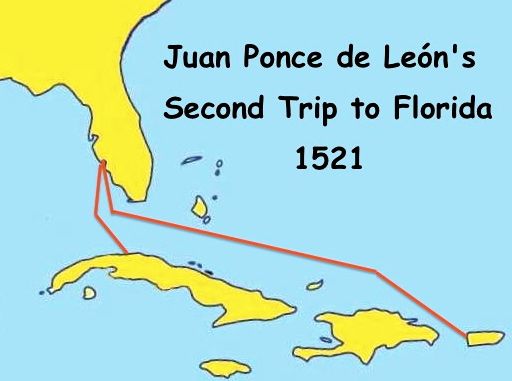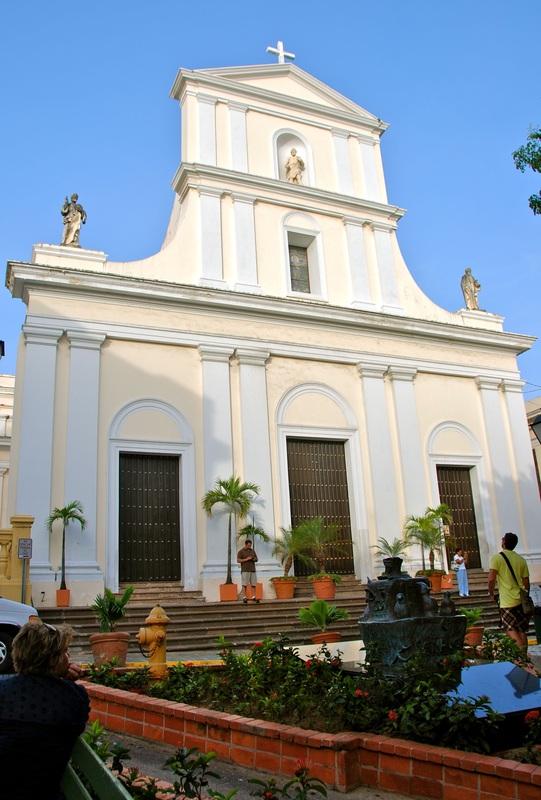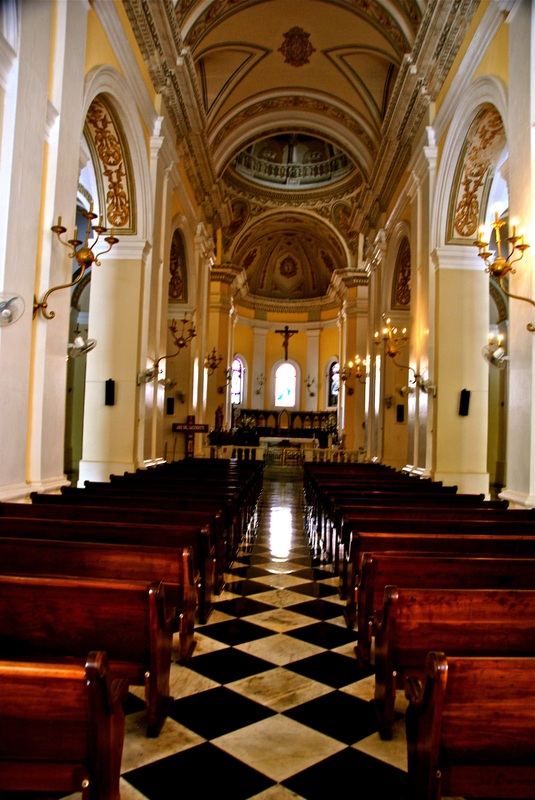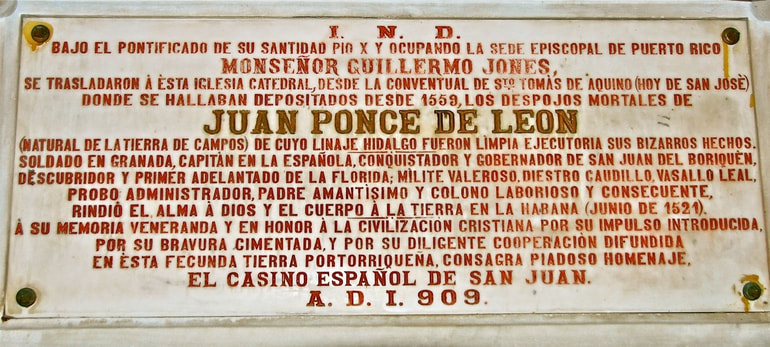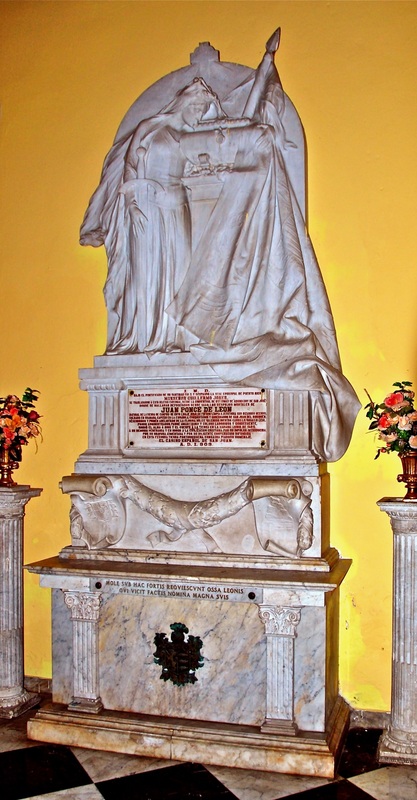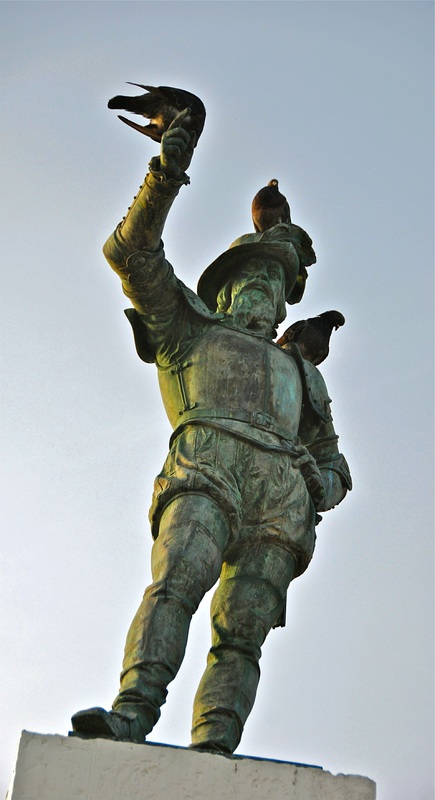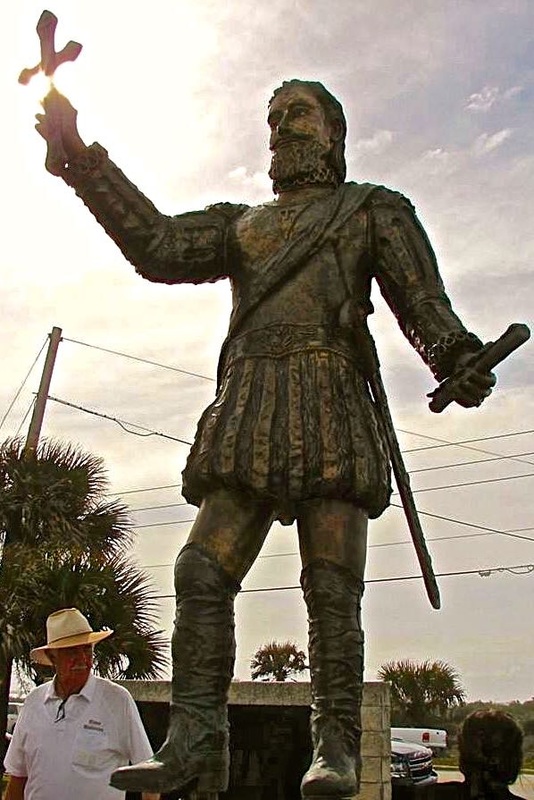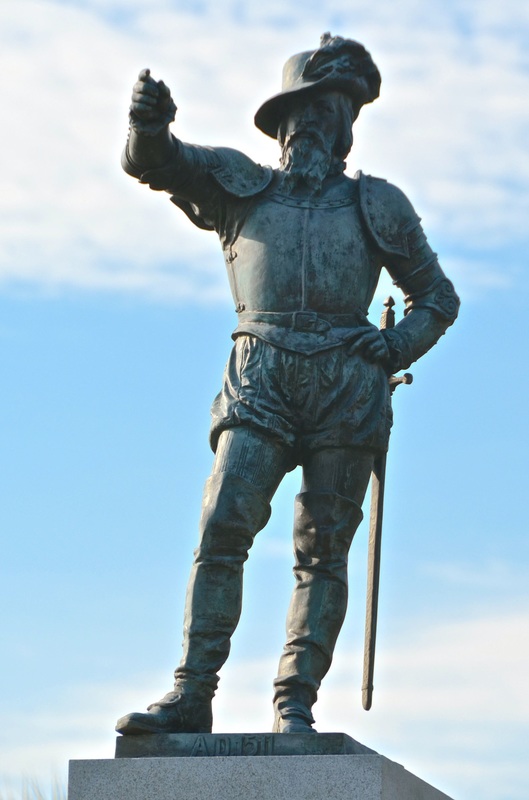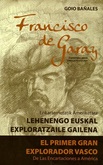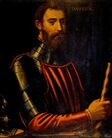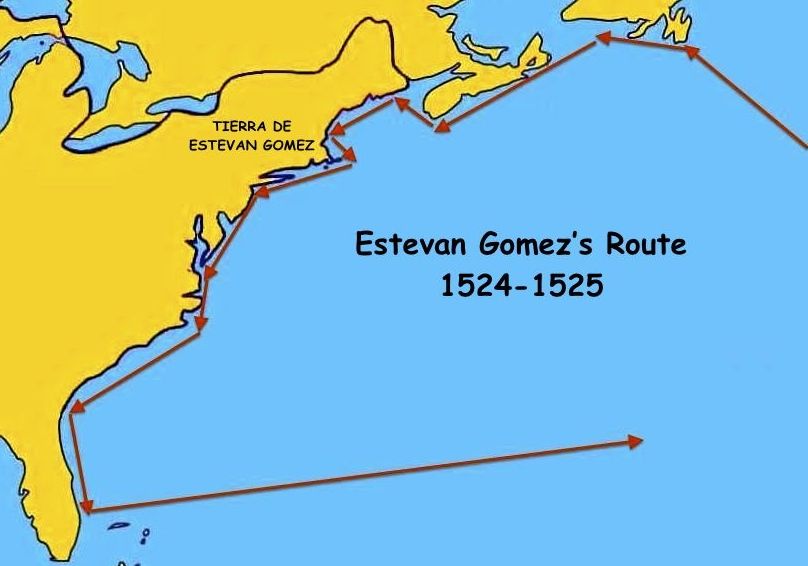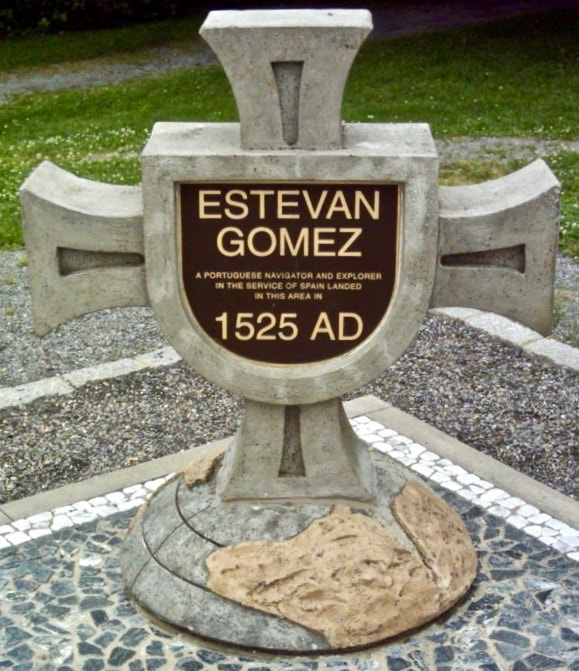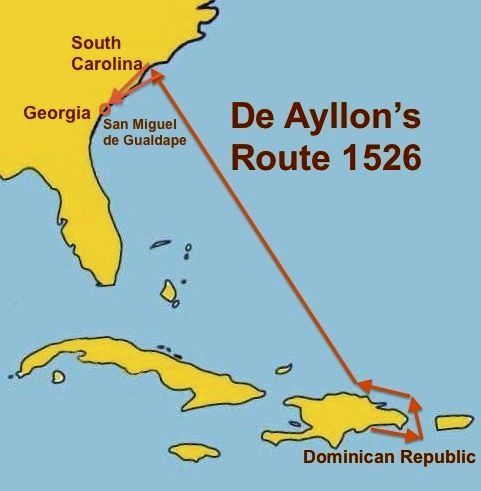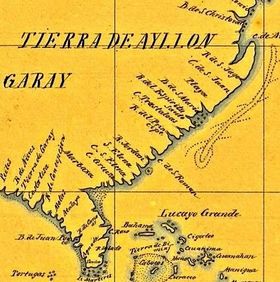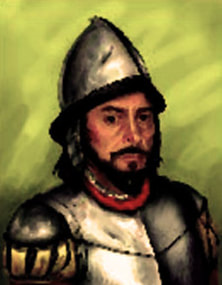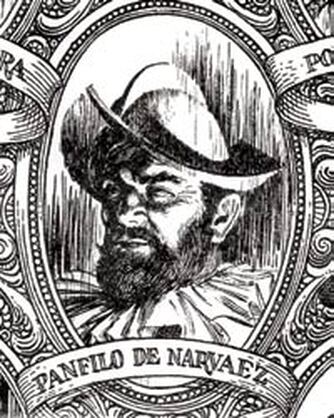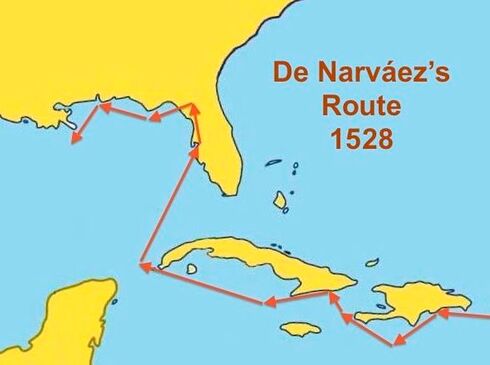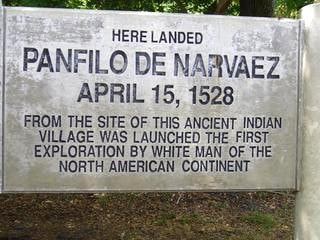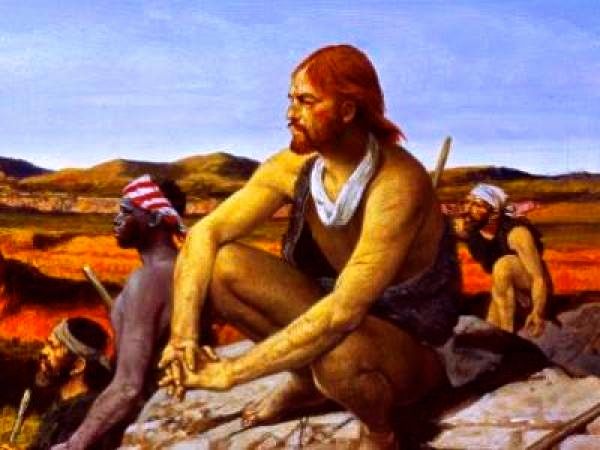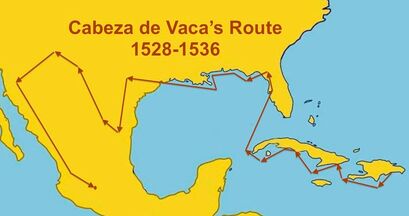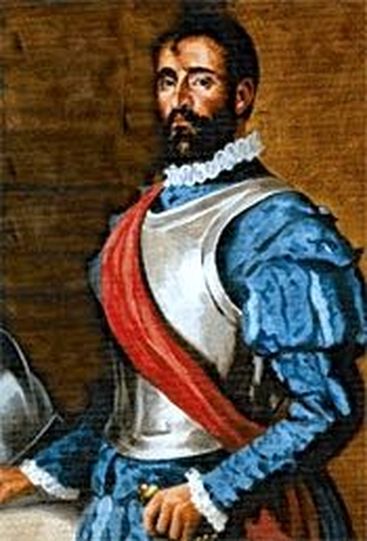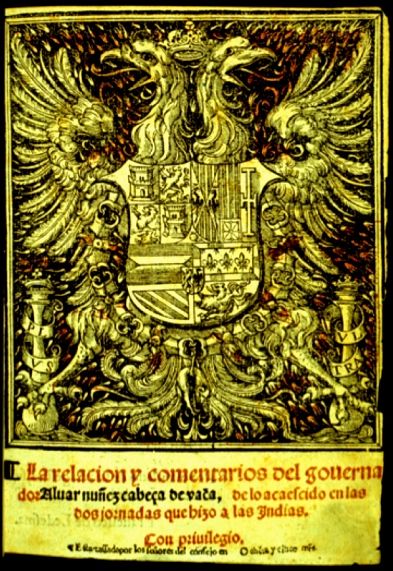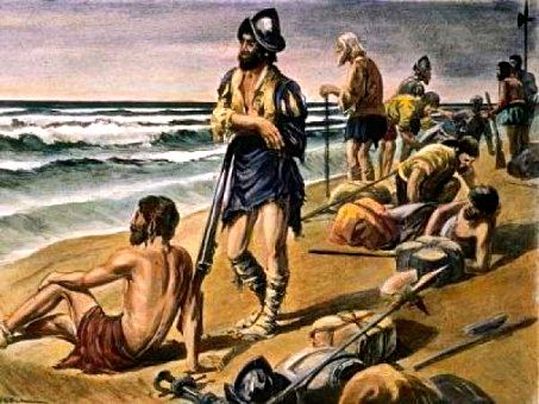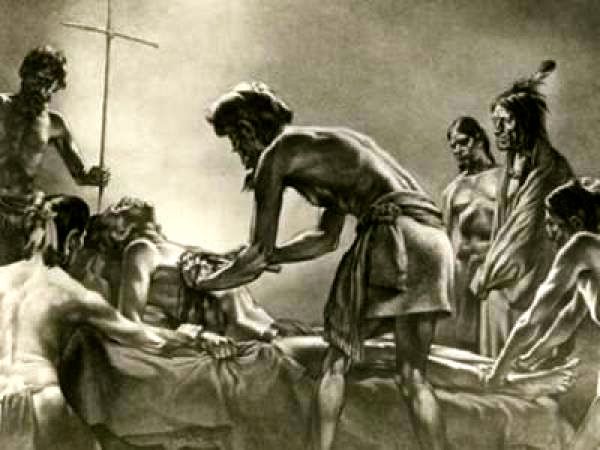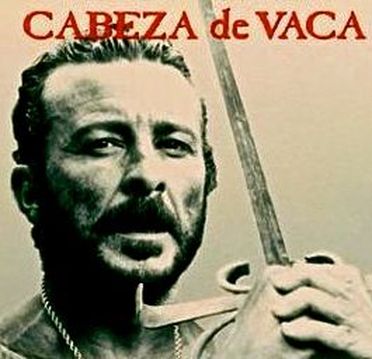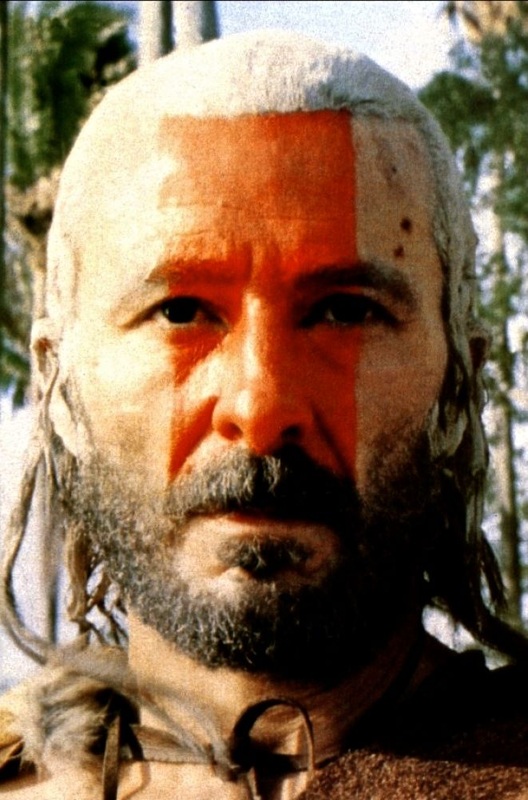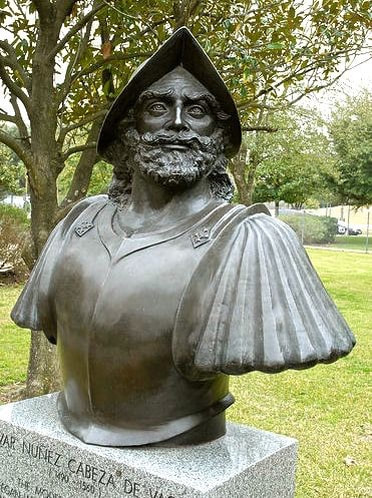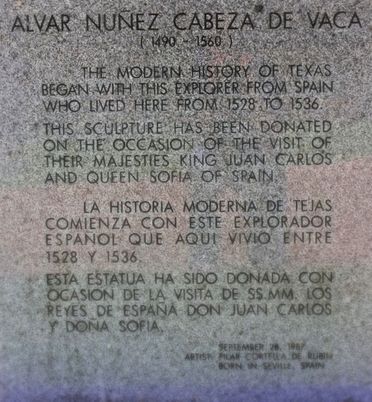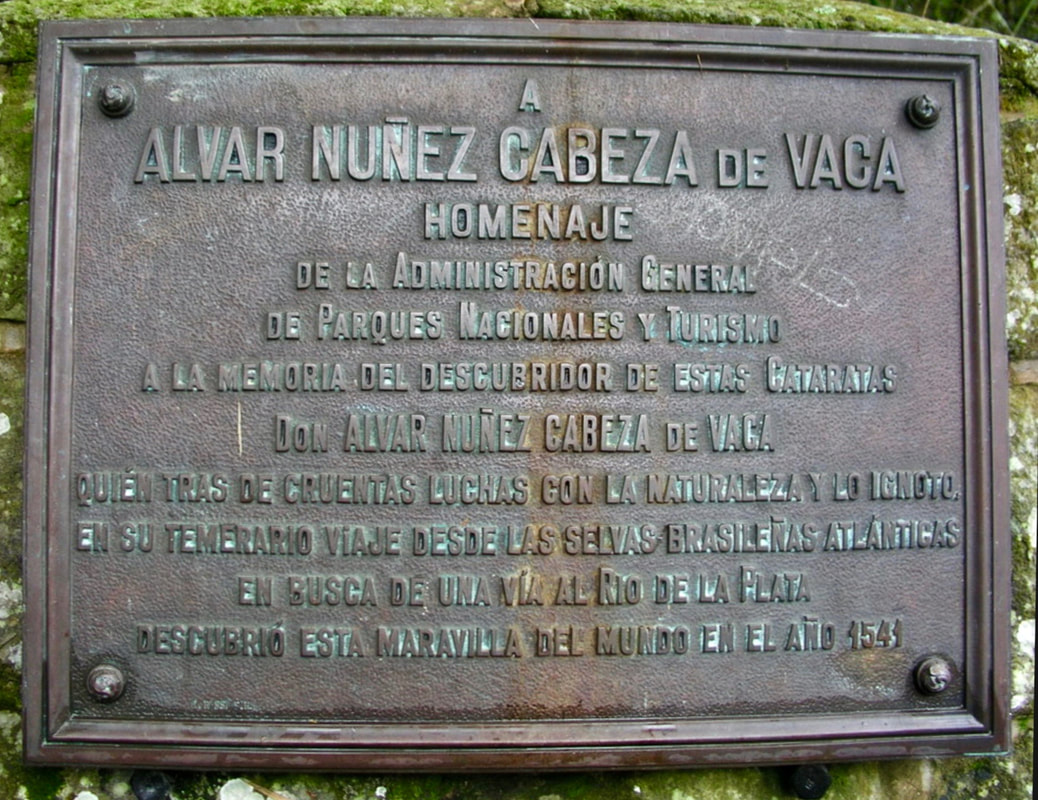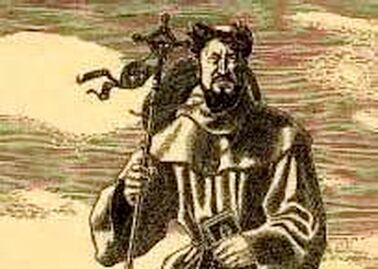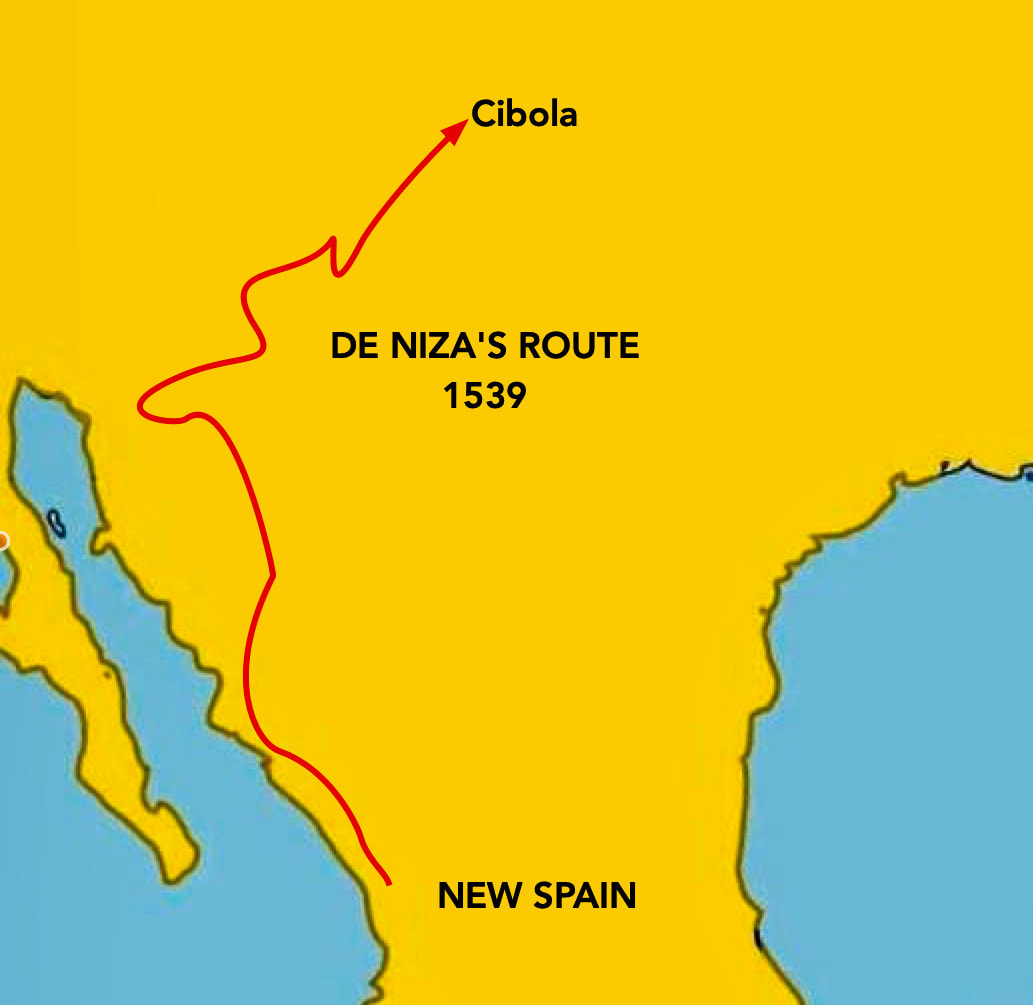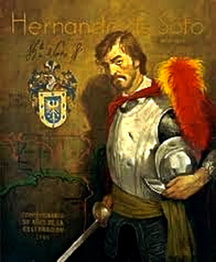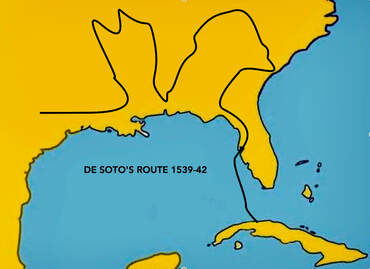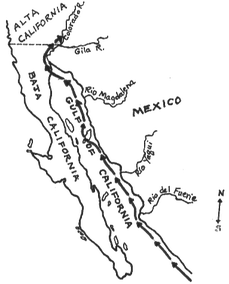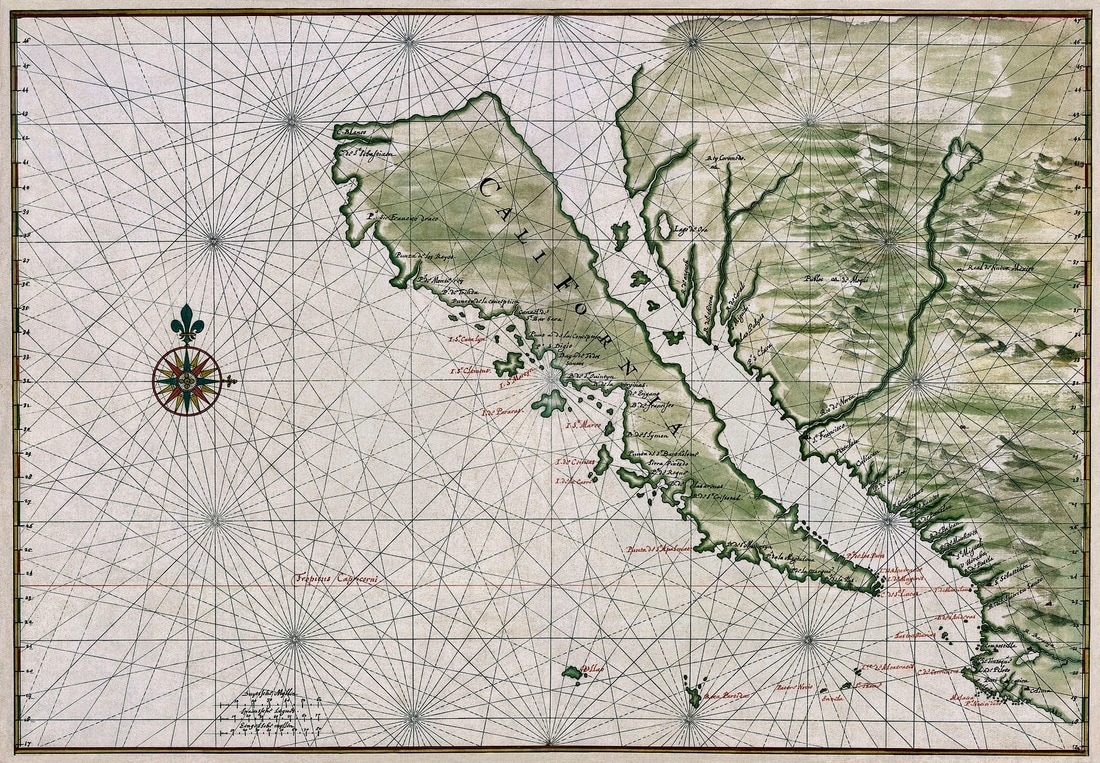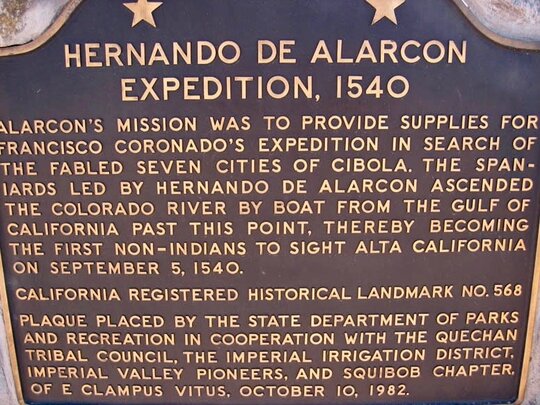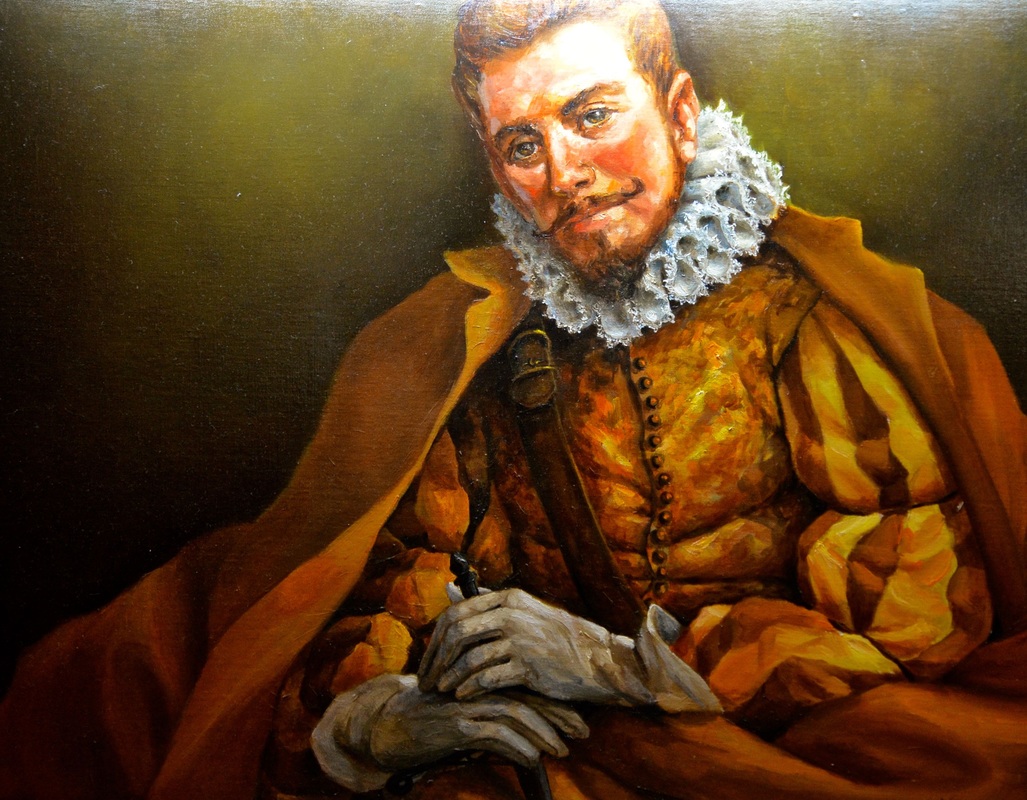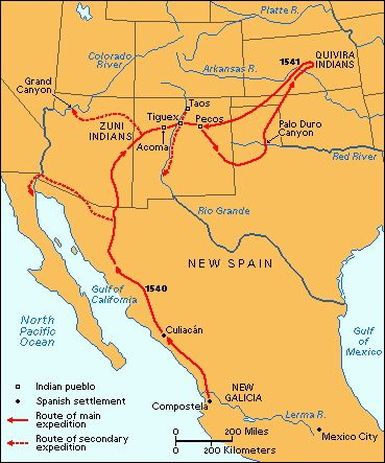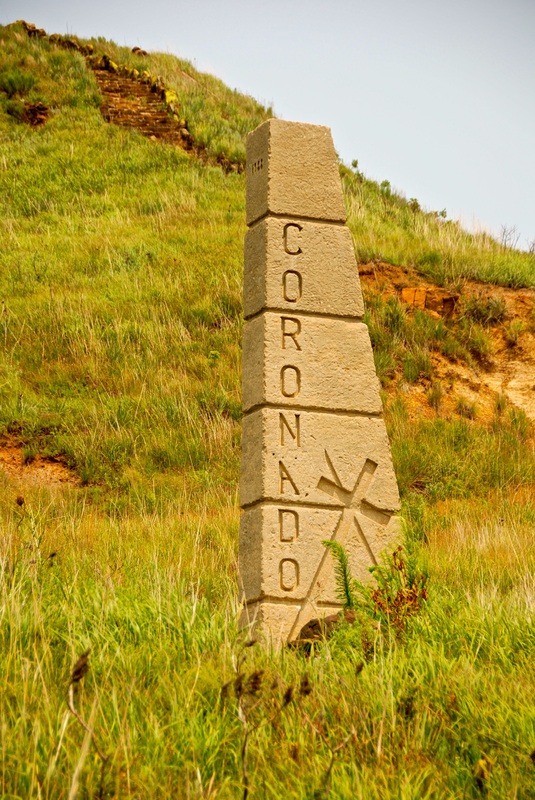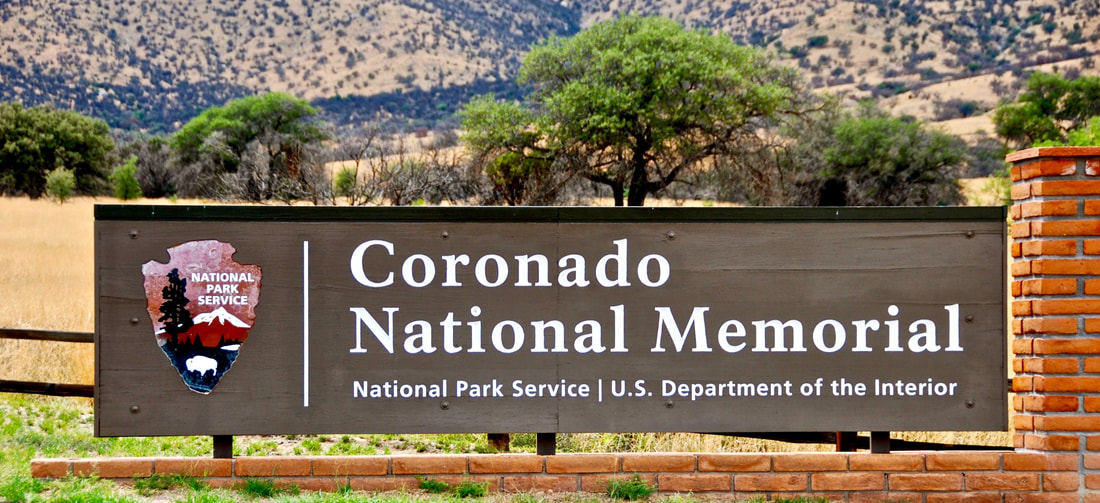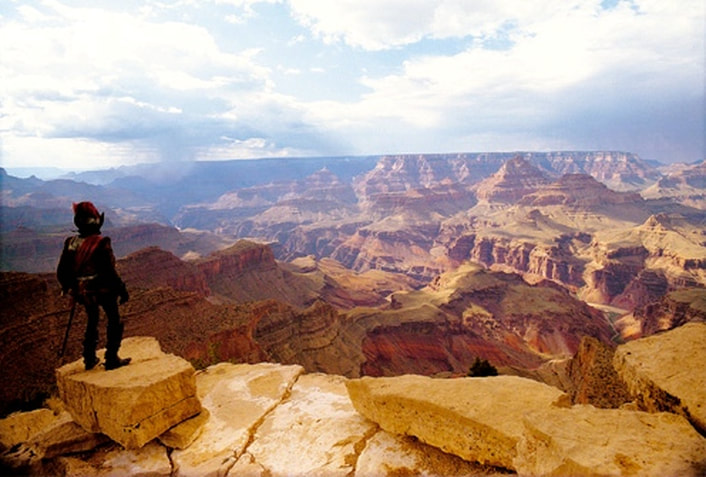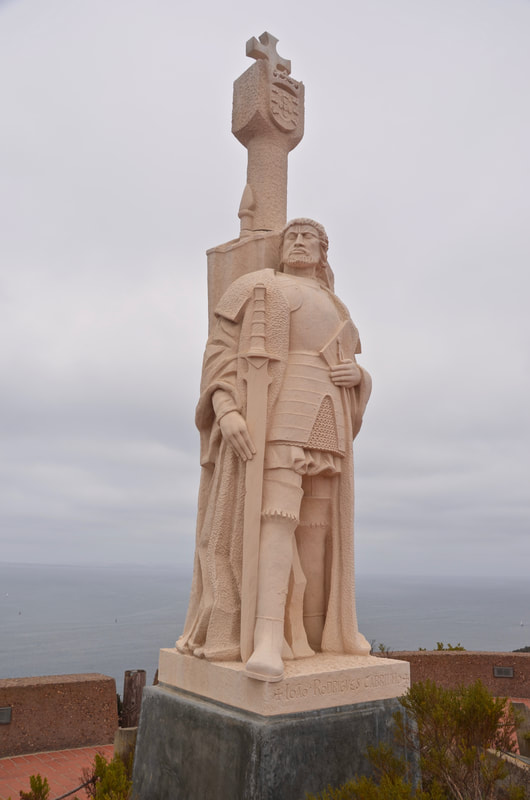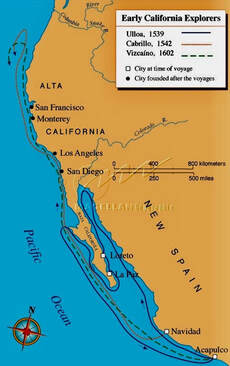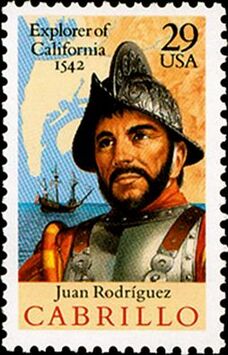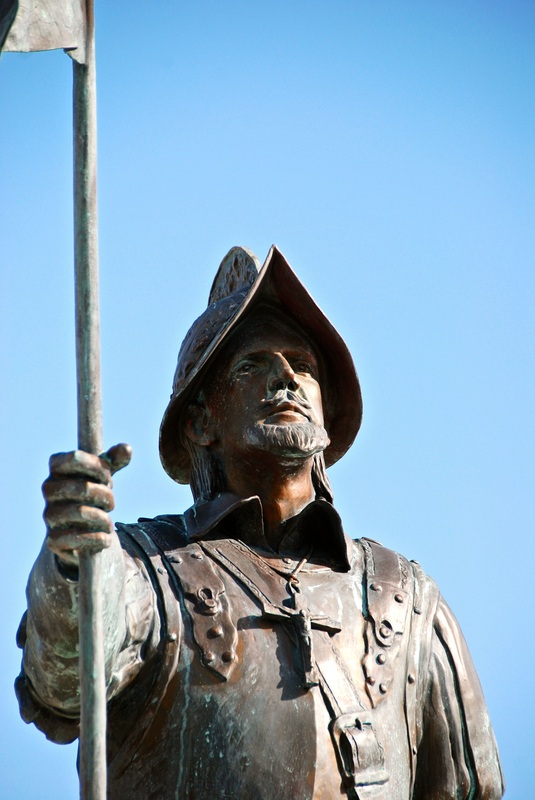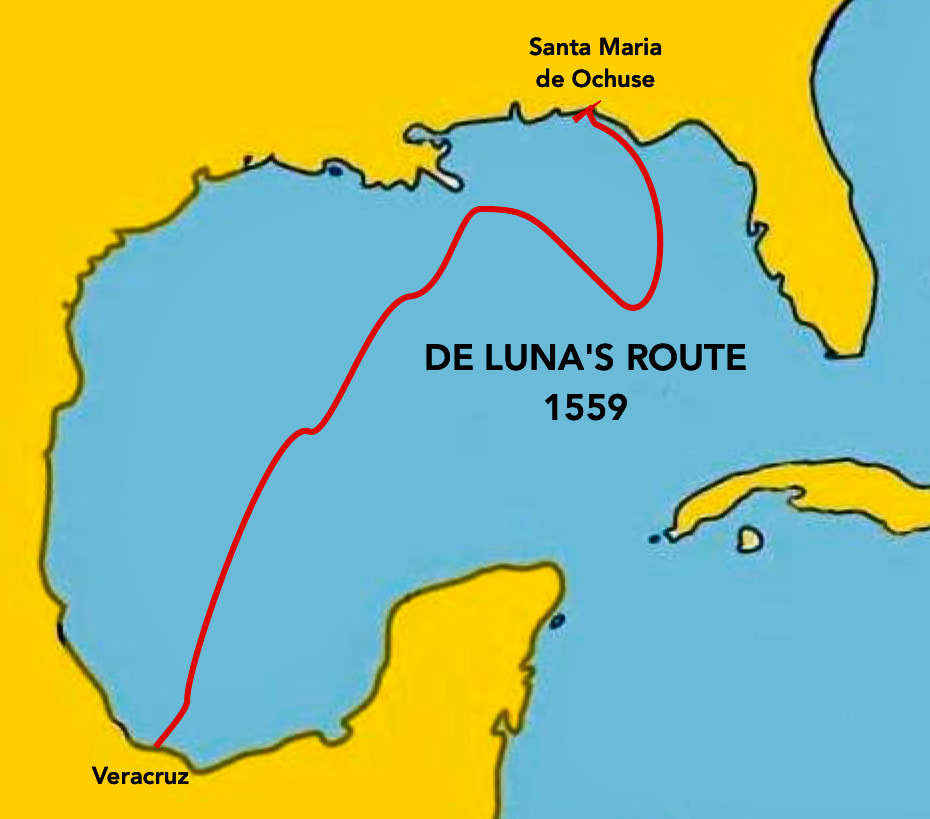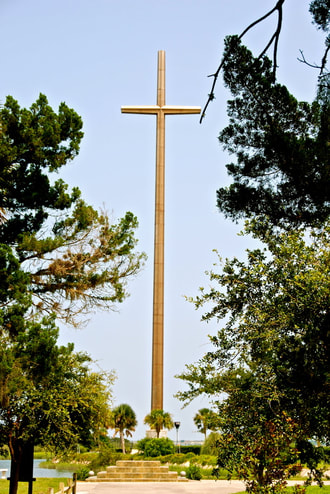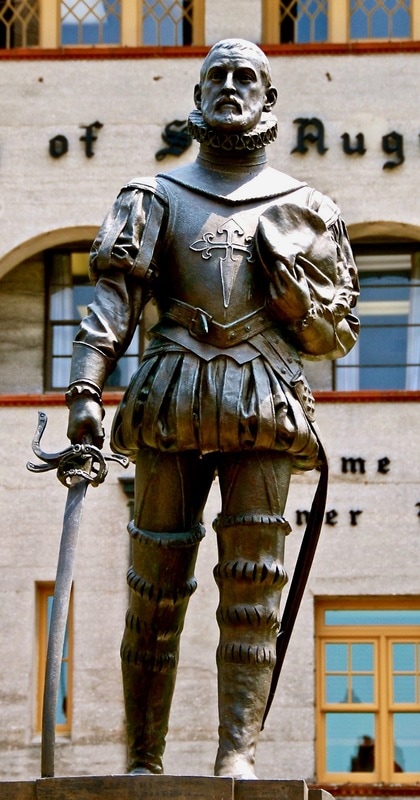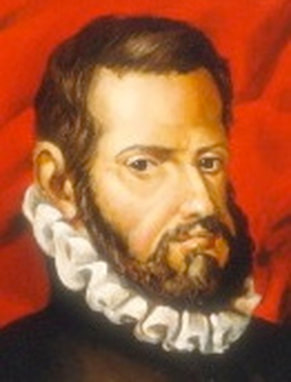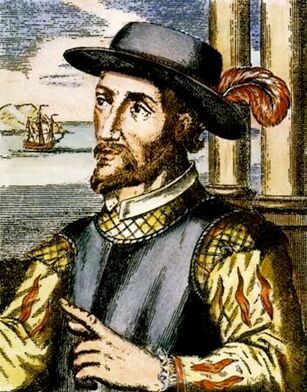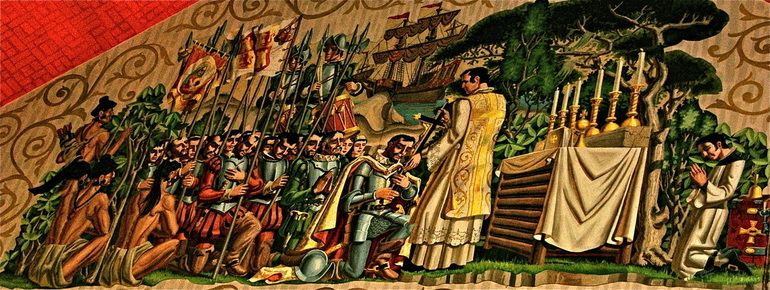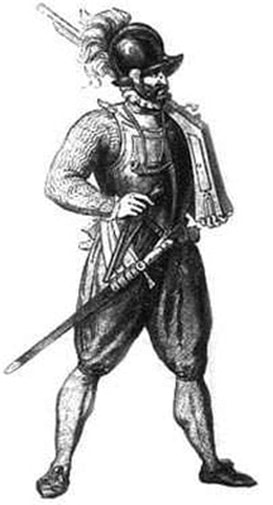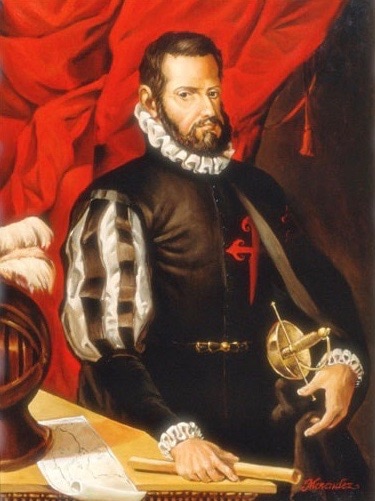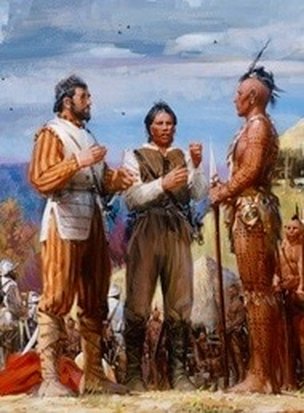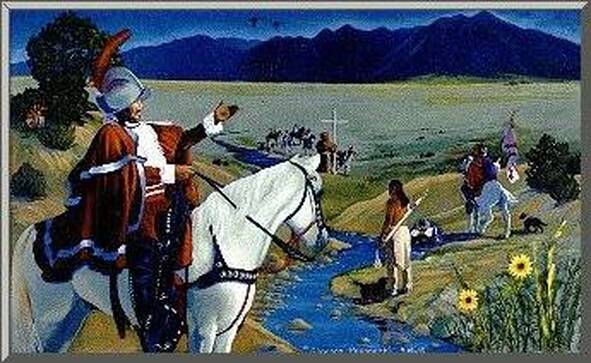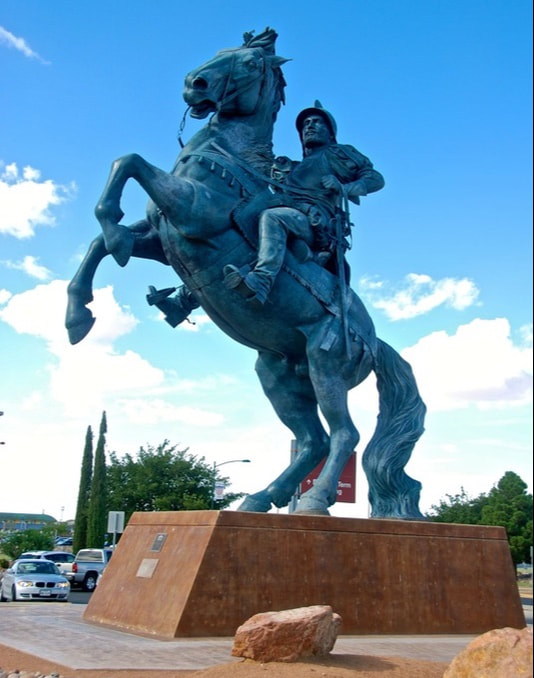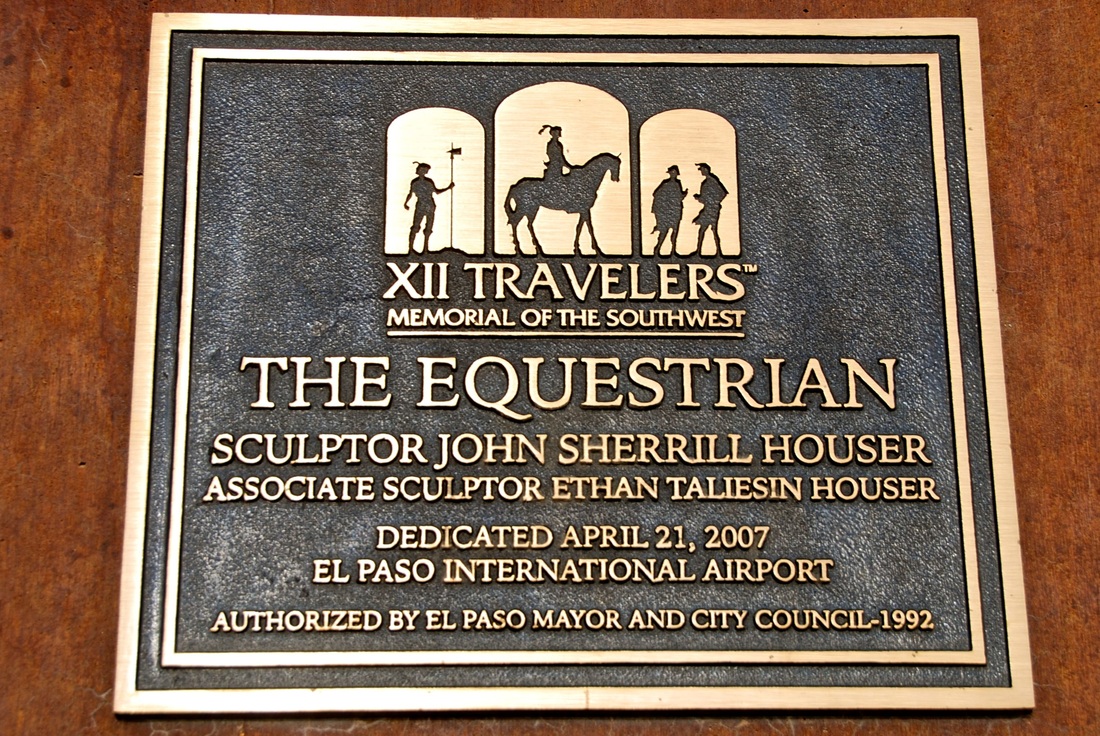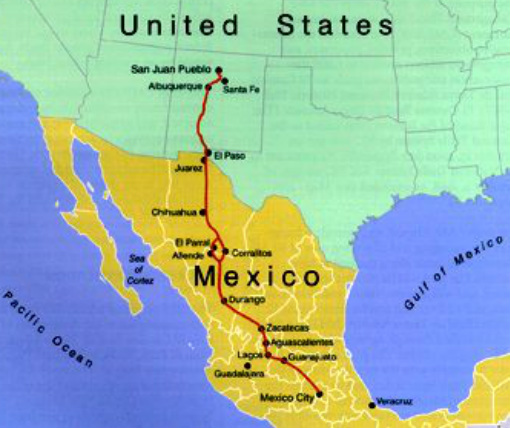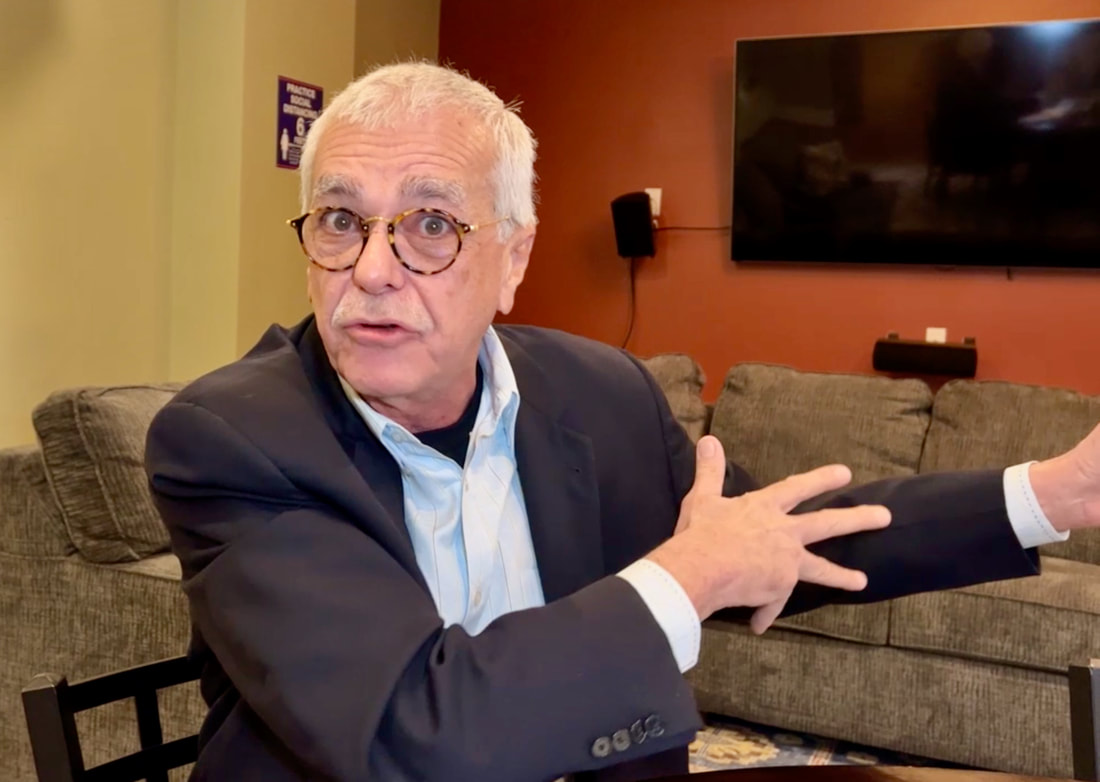Hispanic-American History Timeline
Cronología de la Historia Hispano-Americana
By Lehman College CUNY Students
16th Century 1513-1598
April 2, 1513Juan Ponce de Leon
|
|
Juan Garrido, an African-Spanish conquistador joins the Juan Ponce de Leon Florida-discovery expedition and becomes the first known black person to arrive in what is now the United States mainland. Garrido is a free man!
While American history tells us that the first black people in colonial America are some 20 Africans brought from Angola to Jamestown, Virginia as slaves in 1619, there is ample evidence that Garrido precedes them by more than a century, that he comes on his own accord, and that he is part of a monumental feat! He is part of the three-ship, 200-men expedition that sails north from Puerto Rico and discovers the land Juan Ponce de Leon names “Florida.” They believe they have found an unknown Caribbean island. But six years later, another conquistador is unable to circumvent “Florida,” proving that the Ponce de Leon expedition discovered the North American mainland! Garrido, born in the Kingdom of Kongo, Africa in 1487, is sold to Portuguese slave traders as a child, and somehow acquires his freedom when he reaches Lisbon, Portugal, as a young man. When he moves on to Seville, Spain, he converts to Christianity and takes the Spanish name Juan Garrido. And when he travels from Seville to Santo Domingo, Garrido becomes one of the first free Africans to reach the Americas. Despite whatever misconceptions we may have about Spanish conquistadors, Garrido is a black man who, before coming to Florida, participates in the Spanish conquest of the Caribbean islands with Ponce de Leon, and after Florida, with Hernán Cortéz in Mexico. For Garrido’s participation in the conquest of the Aztecs in Tenochtitlan (Mexico City) in 1519, Cortéz awards him land. And with the labor of Indian and African slaves, Garrido becomes the first person to grow wheat in the New World. In 1538, Garrido submits his request for pension, which includes a ‘probanza,’ or proof of merit, outlining his service to Spain for more than 30 years. He dies in Mexico City between 1547 and 1550, leaving behind a wife and three children. |
April 22, 1513Alaminos discovers the Gulf StreamWhile Ponce de Leon explores the eastern shore of La Florida, in the area of present-day St. Augustine, his pilot, Antón de Alaminos, stays on a ship and makes another amazing discovery: An eastbound, warm water current in the Atlantic Ocean.
While two of their three ships are anchored off Florida, Alaminos' ship keeps getting pulled by the current. On April 22, 1513, the ship's logbook notes that this stream is "more powerful than the wind." That current later becomes known as the Gulf Stream, and for centuries serves as an accelerator – the fastest route – for European ships sailing back home from North America. Although it was Benjamin Franklin who named the Gulf Stream in a 1770 map, the ocean current that still propels ships back to Europe, was not only discovered by Alaminos, it was also first tested by the renown Spanish ship pilot. Six years later (1519), Alaminos becomes the first navigator to return to Europe propelled by the Gulf Stream. |
|
Francisco Hernández de Córdoba, mortally wounded after being violently rejected by the Mayas of Yucatan, makes a brief stop in Florida, where his men also are attacked by natives and where his chief pilot, Antón de Alaminos, is wounded by an arrow in the neck. Hernandez de Cordoba died shortly after they returned to Cuba, but De Alaminos steered another expedition to Yucatan one year later.
|
|
Juan de Grijalva sails along Mexico's Gulf coast from Cozumel Island, off the Yucatan peninsula, all the way north to Galveston Island, in present-day Texas. Setting sail from Cuba with four ships and about 200 men, Grijalba becomes the first Spanish explorer to set foot on present-day Mexican soil and the first to use the term "New Spain." Antón de Alaminos is his pilot.
|
|
Spanish explorer and cartographer Alonso Álvarez de Pineda explores and maps the entire Gulf Coast -- from Florida to present day Texas and discovers that Florida is a peninsula -- not an island, as previously thought.
Sailing from Santiago, the Spanish colony in present-day Jamaica, with three ships and 270 sailors, he proves the insularity of the Gulf of Mexico and disproves the idea of a sea passage to Asia. He and his men become the first Europeans to see the coastal areas of what is now western Florida, Alabama, Mississippi, Louisiana and Texas, including major landmarks like Mobile Bay and the mouth of the Mississippi River. Álvarez de Pineda names Corpus Christi Bay in present-day Texas. He charts the Texas coastline and his map is considered the first document in Texas history. Antón de Alaminos is his pilot. But as they go into the Pánuco River, in present-day Mexico, where they spent some time repairing their ships, they are attacked by Huastec natives. Alvarez de Pineda is killed in battle, but his maps and reports on his findings are taken back to Spanish authorities in Santiago. |
|
Spanish conquistador Juan Ponce de León returns to Florida, from Puerto Rico, in Spain's first effort to establish a permanent colony in the land he had discovered and named eight years earlier.
His two ships and 200 colonists land in the vicinity of what is now Fort Myers on the west coast of Florida, but they are driven back into the sea by attacks from the Calusa Indians. A poisoned arrow mortally wounds Ponce de Leon, and the colonization effort is abandoned. The expedition retreats to Havana, Cuba, where Ponce de Leon dies in July of 1521. His remains are returned to Puerto Rico, where he has served as governor, and he is buried inside the Cathedral of San Juan Bautista, in Old San Juan. Curiously, he rests near the house that was being built for his family, and where he expected to live upon returning from Florida. The beautiful Old San Juan home, overlooking the bay, is called Casa Blanca. And although Ponce de Leon never gets to live in it, his family resides there for 250 years. Nowadays, Ponce de Leon is honored with many statues, and the many streets, parks and other landmarks that are named after him, both in Florida and Puerto Rico. That’s where the City of Ponce got its name! Moreover, Casa Blanca is now a 16th century museum! By Keila Rivera, Lehman College Also see: American Discovery Day
|
San Juan Bautista Cathedral
|
1523-24 |
Before moving on to the next Spanish expedition to step foot on what is now the U.S. mainland, two footnotes are noteworthy here:
|
|
Spanish ship captain Estevan Gomez explores the east coast of North America – from Nova Scotia to Florida – leading a 29-men, single-ship expedition in search for a northwest passage to the Spice Islands, and ends up as the namesake northeast America.
Gomez (or Estêvão Gomes) is a Portuguese navigator and cartographer who sails for Spain. While searching for a waterway across North America, he enters every bay and river along the way. And while never finding the long-sought passage, Gomez charts the entire American east coast. Based on his charts, European mapmakers create the most accurate maps of North America (to date) and call the entire Northeast "La Tierra de Estevan Gomez." How many Americans in the Northeast know that they live in "The Land of Estevan Gomez?" When they see the Hudson River, how many New Yorkers know that Gomez first named it "El Rio San Antonio?" It all starts when, while in prison for deserting the Ferdinand Magellan expedition around the world, Gomez convinces King Charles V that he can find a faster and safer ride to the Indies than the treacherous route around the tip of South America, where he had deserted Magellan three years earlier. In a rush to beat France to find the passage, King Charles V releases Gomez from prison and gives him a chance to prove himself in a new expedition. Sponsorship for this better route to the Spice Islands means the creation of a new 50-ton caravel called Nuestra Señora de la Anunciada. With financial backing from the king, the budget allows for a crew of 29, including Gomez and 28 others (mostly Basque fishermen) to join the voyage. La Anunciada sails from La Coruña, Spain, to Nova Scotia, where Gomez gets tired of waiting for warmer weather and decides to head southwest to try to escape the cold. His ship sails along the east coast from Nova Scotia to the Penobscot River in Maine and to New York harbor, where Gomez finds the mouth of a great river he calls “El Rio San Antonio,” later to be renamed “Hudson.” After 10 months and 27 days checking rivers, bays and all waterways that could possibly cross North America from the Atlantic to the Pacific, Gomez gives up the search for the mythical northwest passage and decides to return to Spain. Yet, before returning home, to offset the cost of his unaccomplished journey, Gomez abducts 50 Native Americans to be used for slave trading. But once back in Spain, this is seen as foolish idea by King Charles V, who forces Gomez to release the slaves he is planning to sell. Although he does not find the northwest passage, and makes a foolish mistake on his way home, Gomez gives Europe the most accurate map of the east coast of North America. In 1529, using Gomez’s charts, celebrity Portuguese cartographer Diogo Ribeiro creates a detailed map of the New World and calls northeast North America, “Tierra de Estevan Gomez.” And that map is used in Europe for many years. By Michael Torres, Lehman College |
|
|
Conquistador Lucas Vázquez de Ayllón leads Spain's second effort to establish a colony in North America, landing with 600 colonists in present-day South Carolina and establishing San Miguel the Gauldape in present-day Georgia.
Although it survived for less than three months, and Ayllón dies there (from an unknown illness), Gauldape becomes the first European colony in what is now the United States -- preceding Pensacola by 33, St. Augustine by 39 years, and Jamestown by 81 years. A 1529 map of the East Coast by celebrity Portuguese cartographer Diogo Ribeiro, followed in Europe for many years, describes the southern half of the U.S. East Coast as 'Tierra de Ayllón.' Despite recent efforts to correct American history by commemorating the sad date when African slaves were brought to the Carolinas by British colonists in 1619, regrettably, it was Ayllón who first brought African slaves to what is now the United States -- some 93 years earlier! Even in terrible events in American history, the British are noticed and the Spanish are invisible! |
|
Spanish ship captain Pánfilo de Narváez leads an ill-fated 300-men and 40-horse expedition to establish a colony in Florida. Marooned and battered by storms, deseases and Native Americans, only five survive.
Narváez, who had lost an eye fighting the Aztecs of Mexico, sails from Hispaniola, disembarks in the Tampa Bay area and decides to lead an overland trek to north Florida, a decision that dooms the expedition. Although he expects to hook up with supply ships along the Gulf of Mexico, and although the ships keep looking for his expedition, they never find each other. His explorers survive by eating their own horses and plundering Native American villages. Their conquest expedition becomes one of survival. Exhausted and without supplies, when they reach the native village of Appalachian, near present-day Tallahassee, they are met with hostility and violence by the natives of the area. They know that, to survive, they must trek across North America to rejoin Spanish forces in Mexico. But as they travel from Florida to Texas, often aboard makeshift rafts, many, including Narváez, are never to be seen again. Some drown and some succumb to attacks from the natives. Only five survive, including four who reach Mexico and one who stayed captive of the Florida natives and was rescued by another expedition more than a decade later. The site of the Narváez landing is marked today by the Jungle Prada Park, in St. Petersburg. NEW DETAILS: See Stop 28 from my summer 2022 road trip: St. Petersburg: Jungle Prada de Narvaez Park, Whitewashing Hispanic History? https://www.hiddenhispanicheritage.com/on-the-road-again.html |
Alvar Nuñez Cabeza de Vaca and three other survivors of the De Narváez expedition explore the Southwest. To survive among the natives, they become slaves, traders, preachers and even healers! One of them, Estevanico, an enslaved black man, born in Morocco, becomes one of the first Africans to step ashore on what is now the continental United States. Cabeza de Vaca becomes America's first evangelical preacher, first historian and first European to describe the fascinating lifestyles of Native Americans, including same-sex marriage. Although most of his shipmates died along the way, Cabeza de Vaca and the other three Spanish sailors - Andres Dornate, Alfonso Castillo and a slave known as Estevanico - had to succumb to much pain and humiliation in order to survive living among many different groups of Native Americans. Eventually, Cabeza de Vaca and his three surviving companions make it all the way to Mexico City, where they rejoin Spanish forces. The other three survivors remain in New Spain. Estevanico then goes on another expedition and allegedly gets killed by natives. But Cabeza de Vaca goes back to Spain and writes a book that becomes very sensational in Europe, inspiring many other explorers to seek fame and fortune in North America. |
|
|
Spanish conquistador Álvar Nuñez Cabeza de Vaca, one of four survivors of the ship-wrecked, 300-men Panfilo de Narvaez expedition, returns to Spain and writes “La Relación” (The Account), a book describing his eight-year, on-foot journey across North America - from Tampa, Florida to Mexico City. Although it is written in Spanish and published in Spain, it is really "the first American history book," covering life in North America from 1528 to 1536.
In "La Relación," Cabeza de Vaca describes how he and his companions trekked on-foot across a huge portion of the recently discovered North American territory, and how they endured hunger, slavery and all kinds of other hardships. “The very night we arrived, some Indians came to Castillo telling him that their heads hurt a great deal, and begging him to cure them," Cabeza de Vaca writes. "After he made the sign of the cross on them and commended them to God, they immediately said that all their pain was gone.” In his book, Cabeza de Vaca notes that he "told them to build churches and place crosses on them ... We had them bring the children of the principal chief’s and baptized them.” In this book, he tells the stories of North America’s native people, flora, and fauna. He describes the lifestyle of nomad groups in which the men do the hunting and the women carry the bulk of the workload. His discoveries are fascinating in Europe, especially his description of gay marriages among Native Americans. “During the time I spend with these people I saw one wicked thing, and that was a man married to another man,” Cabeza de Vaca writes. "These are womanish, impotent men who cover their bodies like woman.” His book serves as one of the first warnings of the terrible European diseases that kill many Native Americans. “Half the natives die from disease of the bowels and blamed us,” he writes. The book is also one of the first Spanish essays calling for tolerant and compassionate treatment of the natives of the Americas. Because he knows the turf and the Native American languages and cultures, Cabeza de Vaca feels he is best qualified to lead another expedition in North America. Deeply religious and humanitarian, he feels he can convert Native Americans to Christianity by peaceful means. But back in Spain, he is too late in making his request. Command of such an expedition - again starting from the Tampa Bay area - has already been assigned to Hernando de Soto. Recognizing Cabeza de Vaca's valuable experience, De Soto asks him join the expedition. But Cabeza de Vaca wants his own command - he wants to lead a friendly, humane mission - and rejects the offer. And so he spends the next two years writing "La Relación," which is first published in 1542 in Zamora, Spain and later republished in several languages. Yet by the time the book is being sold in Europe, Cabeza de Vaca is finally leading his own expedition - in South America! Spanish King Charles V sends him to take over as governor of the Rio de Plata region. On his way there, deciding to take an overland route across the southern tip of South America instead of the traditional sea route, he leads the first Europeans to see the "largest-in-the-word" Iguazú Falls that now serve as the border between Brazil and Argentina. Back in Spain in 1555, he publishes a revised edition of “La Relación,” including his experiences in South America. Cabeza de Vaca's book unlocks a new frontier of opportunities for European explorers and adventurers. His "first American history book" serves as a guide for future Americans. By Yulibell Sanchez, Lehman College |
With Estevanico as his guide, Fray Marcos de Niza leads an expedition to find the fabled seven golden cities of Cíbola, reaching into present-day New Mexico and turning back after Estevanico was allegedly killed by Zuni Indians.
Yet, having seen adobe buildings glittering in the sun from a distance, Niza reported having found golden cities and created the incentive for future Spanish expeditions into the current U.S. mainland. Some historians cite the possibility that Estevanico, who would again be a slave upon returning to present-day Mexico, may have decided to stay to live with the natives. |
Spanish explorer and conquistador Hernando de Soto leads the first European overland expedition of the present-day United States, exploring the territory that later became Florida, Georgia, South Carolina, North Carolina, Tennessee, Alabama, Mississippi, Arkansas and Louisiana.
They celebrate America's first Christmas, cross the Mississippi River. Starting from Cuba, their four-year, 4,000-mile hike finally lost its drive when de Soto died of "a fever" from some unknown disease at the banks of the Mississippi. To prevent the natives from finding his body, this crew buries him in the Mississippi. Read more: America's First Christmas. NEW DETAILS: See Stop 27 from my summer 2022 road trip: De Soto National Memorial, Bradenton, Fl. https://www.hiddenhispanicheritage.com/on-the-road-again.html |
|
Spanish explorer Hernando de Alarcon sails northward from Acapulco, along New Spain's Pacific coast, through the Gulf of California, enters the Colorado River, and becomes one of the first Europeans to reach what it is now California. He also confirms that California is not an island.
After sailing with three ships and for three months, avoiding sandbars that slowed the journey, de Alarcon finds the mouth of the Colorado. He then selects about 20 experience seamen, takes two boats, and spends 12 days leading the first Europeans to ascend the river for a considerable distance. Their mission is to meet and resupply the simultaneous overland expedition into North America led by Francisco Vasquéz de Coronado. Although the meeting is not realized, de Alarcon's expedition finally discards a fictional legend. For many years, the civilized world thought that California was an island. That misconception comes from a 1510 Spanish romance novel that made the first known mention of "an island called California." It was to be found "on the right hand of the Indies" and "very close to the side of the Terrestrial Paradise," and it apparently led early Spanish explorers to wishfully assume that the body of land to the west of New Spain (Mexico) was the legendary island of California. They named California and called it an island even before circumventing it. In 1539, an expedition led by Spanish navigator Francisco de Ulloa had reached the head of the gulf and turned back, finding no path to the Pacific Ocean, which seemed to prove that the peninsula is not an island. Yet even cartographers had been so convinced that the peninsula was an island, that it took the Alarcon expedition to dispel that misconception one year later. Today, the State of California recognizes Hernando de Alarcon with a roadside plaque, in Andrade, California, which notes that "The Spaniards led by Hernando de Alarcon ascended the Colorado River by boat from the Gulf of California, past this point, thereby becoming the first non-Indians to sight Alta California." By Glenda Fred, Lehman College |
1540-1542Coronado Explores the Southwest, Cardenas Discovers the Grand CanyonSpanish explorer Francisco Vasquez de Coronado leads an expedition of more than 1,000 settlers and slaves through territories covering present-day Arizona, New Mexico, Texas, Oklahoma, and Kansas. And some of his explorers discover the Grand Canyon!
Following directives from the Spanish Crown, Coronado sets out to spread the word of God, to expand Spain’s territory in the New World and find the mythical Seven Cities of Cibola, believed to be rich with gold. The prospect of immense wealth makes Coronado not only accept the assignment but, along with other investors, he invests his rich wife’s money in the expedition. The Coronado caravan, including 340 Spanish soldiers, 700 Indian allies and some slaves, starts in New Spain (present day-Mexico) and travels with supplies, tools, and thousands of livestock. When the large group of settlers begins to slow down the expedition, Coronado decides to split them into smaller groups, sending them in different directions to explore more territory. Five months into the expedition, when Coronado and his followers reach Cibola in present-day New Mexico, they fail to find the riches they were expecting. What they find are Native American pueblos built of stones and mud – and Zuni Indians who know nothing about gold. But Coronado isn’t giving up. While he gives up his search for Cibola, he hooks up with a Native American who claims to be able to lead him to another land of richness, known as Quivira. Following this new guide, whom the Spanish call “The Turk,” Coronado travels much further north, leading a group about 30 settlers through portions of today's Texas, Oklahoma, and Kansas. But when they finally reach Quivira, in the plains of Central Kansas in 1541, they discover the grass-hut villages of the Quivira Indians, but there is no gold to be found. Feeling deceived and mislead by their Indian guide, the Spanish settlers kill The Turk and Coronado decides to return to New Mexico to rejoin the main expedition. However, while Coronado is in Kansas, a small group from his expedition, lead by Garcia Lopez de Cardenas, is searching for the Colorado River and discovers the Grand Canyon! The river has been discovered by other Spanish explorers about a year earlier, but they are the first Europeans to set their eyes on that amazing Grand Canyon, in present-day Arizona. Back in New Mexico in 1542 Coronado is thrown off his horse and sustains a head injury, leaving him no other option but to return to present-day Mexico, without the fortune he sought for himself, his investors and for Spain. Although he resumes his post as governor of Nueva Galicia, on Mexico’s western coast, until 1544, charges of cruelty against the Indians and mismanagement of the expedition are filed against both Coronado and Cardenas, his field master, especially for their role in the bloody “Tiguex War,” against the natives of New Mexico. Yet, although numerous natives lost their lives as a result of the Coronado expedition, thanks to Coronado’s political connections, only Cardenas is convicted, back in Spain, and sentenced to seven years in prison. Coronado remains in Mexico until his death of an infectious disease in 1554. He is buried under the altar of the Church of Santo Domingo in Mexico City. The Coronado expedition discovers no gold and converts no new Catholics, but it lays claim to vast new territories for Spain. The expedition covers about 4,000 miles of new territory, fertile ground for European farming and important landmarks such as the Grand Canyon. In the 16 century, Coronado’s expedition is considered a failure. But now, while some are still disgusted by its cruelty against Native Americans, to many others, his expedition is seen as a great accomplishment. In 1952, the Coronado National Memorial is established in southern Arizona as a way for people to see the impact that the Coronado expedition had on the southwestern United States. By Tiffany Guzman, Lehman College |
|
1542-1543
|
|
Spanish conquistador Tristan de Luna leads an 11-ship, 1,500-person expedition, starting from Veracruz, Mexico, to settle Santa Maria de Ochuse in present-day Pensacola, Fl.
It predated the founding of Jamestown by a half century and St. Augustine by a half dozen years. Although the settlement was wiped out by a fierce hurricane shortly after it was established, Pensacola still calls itself "America's First Settlement." Just one month into building this new town, the hurricane leaves hundreds of men, women and children without food or supplies. Several ships are lost with their cargo. The two ships that survive the storm are sent to Veracruz and Havana to seek help. Spain's effort to establish a settlement on the Gulf coast turns into a rescue mission. Yet those efforts persist. While some colonists return to Mexico, others try to survive by moving further inland. De Luna is eventually deposed and replaced by other Spanish officers, until 1561, when the remaining colonists are evacuated and the colony is finally abandoned. This statue is the centerpiece of a beautiful plaza facing Pensacola Bay. "If the Luna settlement had succeeded, the story of America would have been much different," according to an exhibit at the T.T. Wentworth, Jr. Florida State Museum in downtown Pensacola. Read more: Beyond St. Augustine |
|
Spanish conquistador Pedro Menendez de Avilés establishes St. Augustine, the first successful settlement in Spanish Florida, and the city that is to become the oldest continuously inhabited European settlement in the continental United States.
He names the settlement "San Agustin" because 11 days earlier, on August 28, the feast of San Agustin, his fleet sighted the coast of Florida. To commemorate the town's foundation, on Sept. 28, they celebrate a Catholic Mass with the Timacua natives of the area. That ceremony is to be regarded as America's first Thanksgiving. Leading a fleet of several ships with some 1,000 sailors, soldiers and settlers, his mission is to survey the North American east coast, seek a suitable site to establish a permanent colony and drive away European intruders who could be encroaching on territory claimed by Spain. Yet shortly after sighting Florida, before exploring the coastline or seeking a settlement site, they find precisely what they had feared: French settlers secretly establishing a colony. It's part of France's effort to move into Spanish territory and contest Spain's claim of Florida. But it is as much a war between two competing European powers as it is a war between two religions. The Spanish are Catholics and the French are Huguenots (members of the French Reform Church) led by French naval officer Jean Ribault, who has led French efforts to establish a colony in the territory claimed by Spain. Unable to attack the French "Fort Caroline" (in present day Tallahassee, Fl.) by sea, Menendez leads his fleet further south and establishes "San Agustin," in Northeast Florida -- in the same area where Juan Ponce de Leon's first landed when he discovered Florida in 1513. From San Agustin, Menendez leads an overland expedition, attacks and defeats Fort Caroline, and spares only the women and children. Spanish soldiers hang French bodies from the trees, with the inscription: "Not as Frenchmen, but as heretics." In the meantime, the French fleet led by Ribault is southbound on its way to attack St. Augustine. Yet, driven by hurricane winds, the French end up shipwrecked and marooned on the beaches south of St. Augustine, in an area that would be known as "Matanzas," because Menendez's forces catch up to them there and "slaughter" them. Menendez becomes the first governor of Florida and St. Augustine serves at the capital of Spanish Florida for more than 200 years. The city also serves as the capital of British Florida during the 20-year period (1763-83) when "La Florida" is British, and then becomes Spanish again. When Spain cedes Florida to the United States in 1821, St. Augustine remained the capital of the Florida Territory until 1824, when Tallahassee became the capital. Today, St. Augustine is the foremost Spanish colonial city in the United States, dotted by landmarks and monuments that attract tourists from all over the world. The Castillo de San Marcos, and the colonial downtown, centered by a statue of Juan Ponce de Leon, and the Cathedral of St. Augustine could each be enough to draw many tourists. Yet in St. Austine, they are only part many more great attractions. By Yissel Liriano, Lehman College NEW DETAILS: See Stops 8-19 from my summer 2022 road trip: St. Augustine! https://www.hiddenhispanicheritage.com/on-the-road-again.html |
|
|
Pedro Menendez de Alvilés, the first governor of Spanish Florida, establishes Santa Elena, a Spanish settlement on what is now Parris Island, South Carolina.
One year after establishing St. Augustine, Menendez expands the Spanish emprire northward, building Santa Elena at a site near an abandoned French outpost, Charlesfort, which was build by explorer Jean Ribault in 1562 and deserted one year later. At this time, Spanish Florida extends all the way north to the Carolinas, and Menendez makes Santa Elena the capital of Spanish Florida. Santa Elena becomes a sizeable community and the base of operations for Spanish Jesuit and military expansion. From Santa Elena, Menendez orders inland expeditions -- led by Captain Juan Pardo -- to the interior of what is now South Carolina, North Carolina and Tennessee. Pardo's mission is to pacify and convert the natives to Catholicism, and to discourage the creation of French colonies in this area. Pardo's first expedition reaches Joara, the great Native American regional center of Mississippian culture near present-day Morganton, N.C. From 1566 to 1568, Pardo buids six forts in what is now South Carolina, North Carolina and Tennessee and leaves a small contingent of Spanish soldiers, and Jesuit missionaries, at each one. These are considered the first European settlements in the interior of North America. But the natives resist Spanish settlements. They attack and burn the forts, and within 18 months, kill all but one of the 120 soldiers and missionaries Pardo had left behind. This is the last time the Spanish try to imposed their colonial claim in the interior. In 1576, even Santa Elena is attacked and burned by the natives of nearby villages, and the Spanish are forced to abandon their forts -- San Felipe and San Salvador -- on the island. They return one year later, reestablish the settlement and build a new fort, San Marcos, which was able to repell an attack by 2,000 natives in 1580. Nevertheless, by 1587, the Spanish have lost interest in colonizing the Carolinas. They abandon Santa Elena and retreat to present-day Florida. Some of the native Escamacu people area, who had converted to Catholicism, kept their religion and Spanish rituals. The site of Santa Elena has not been fully reoccupied since Spanish left in 1587. In the past few decades, extensive archaeological excavations have been conducted at the Charlesport/Santa Elena site. Archaeologists have found many important clues about Spanish colonists in the 16th century. The found that Santa Elena had a series of colonial buildings around a central plaza. Today, Charlesfort-Santa Elena is a National Hispanic Landmark. Visitors to Parris Island can learn about the island's history at the nearby USMC Parris Island Museum, within the United States Marine Corps Recruit Depot on Parris Island in Port Royal, SC. The museum is open daily from 10 am to 4:30 pm, except for holidays. By Madly de la Rosa, Lehman College NEW DETAILS: See Stop 5 from my summer 2022 road trip: Santa Helena, S.C. https://www.hiddenhispanicheritage.com/on-the-road-again.html |
|
COMING SOON: 1590 - Gaspar Castaño de Sosa - First attempt to colonize New Mexico
|
Juan de Oñate, a Spanish conquistador born in New Spain (present-day Mexico), leads a caravan of 129 soldiers, 10 Franciscan friars, some 300 settlers, 83 wagons and about 7,000 head of cattle, crosses the Rio Grande and claims New Mexico for the Spanish crown.
To celebrate the river crossing, in present-day Texas, he hosts a mass and invites the natives to join him and his troops in a thanksgiving meal. Today, this is known as the Texas Thanksgiving. In New Mexico, the expedition settles at the juncture of the Rio Grande and the Chama River and establishes “San Juan de los Caballeros” as the first capital of New Mexico. A year later, Oñate moves the capital to the west bank of Rio Grande and establishes "San Gabriel" (both are part of the present-day Ohkay Owingeh). Later, as the colonial governor of Santa Fe de Nuevo Mexico, a province in the Viceroyalty of New Spain, he leads early Spanish expeditions to the Great Plains and the lower Colorado River Valley, encountering Native American pueblos, establishing Spanish administered settlements, and making enemies among the natives. In 1607, Oñate is forced to resign as governor and returns to Mexico City to face the charges of maladministration. He is convicted of disobedience and mistreatment of both the natives and colonists, and is banished from New Mexico. He later travels to Spain where he dies. Today the site where San Gabriel once stood is considered a National Historic Landmark and is marked by a cross and memorial. In 2005 the people changed their pueblo name back to its their original, pre-Spanish name of Ohkay Owingeh. Today Ohkay Owingeh serves as the capital of the eight Northern Pueblos of New Mexico and is considered a federal Indian reservation. Nowadays, some people honor Oñate for his accomplishments as "the great colonizer" of New Mexico, while others vilify him for his cruelty to Native Americans. There are statues of him in Alcalde, New Mexico and El Paso, Texas. But since he was accused of punishing the Acoma natives by amputating their right feet, in 1998 as many were celebrating the 400th anniversary of his founding of New Mexico, someone cut off the statue’s right foot, and left a note: “Fair is fair.” In Texas, Native Americans pressured local politicians and, as a compromise, the planned statue of Oñate was renamed “The Equestrian” before it was even finished. By Gail Diaz, Lehman College |
Go to: 17th Century 18th Century
Please note that this timeline is devoted to the Hispanic presence in North America starting on April 2, 1513. While Latin America Timelines obviously begin much earlier, and cover the history of our antecedents in Latin America and Spain, they often exclude everything that happened in North America - even the accomplishments of the conquistadores who came north from the Caribbean and Mexico, and the Hispanics who followed them! With our timeline, our goal is to fill the huge gaps that leave U.S. Hispanics out of U.S. history.
What's Missing? Que Falta?
|
Help us build this timeline! Click:
https://www.facebook.com/HiddenHispanicHeritage And tell us: Which major historical event are we missing? |
´Ayúdenos a construir esta cronología! Clic:
https://www.facebook.com/HiddenHispanicHeritage Y díganos: Qué gran evento histórico nos estamos perdiendo? |
|
Are you on Twitter? For Updates on
HiddenHispanicHeritage.com Please follow me: @ColumnistPerez https://twitter.com/ColumnistPerez |
|



